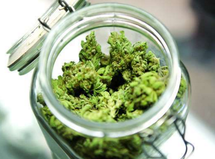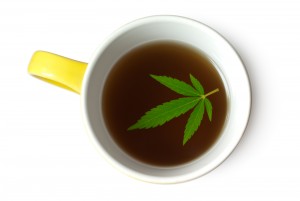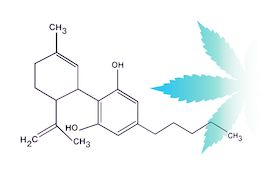|
By Dr. Jean Talleyrand
A pheromone is any chemical an animal produces which changes the behavior or physiology of another animal of the same species (animals include insects). Pheromones are not hormones. The difference is that pheromones act outside the pheromone-producing animal, while hormones act inside the hormone-producing animal. In fact, there is no defined chemical structure to a pheromone. Scientists are not even sure they exist!! Pheromones are supposed to cause behavior changes, like making another animal sexually aroused or warding off others from marked territory. Pheromones don’t necessarily have an odor, but they are often described as having an odor or causing its effect through scent. In review of clinical studies on pheromones, often it is the sweat or oil on the skin of a animal that is believed to contain the pheromone. There exists a group of chemicals that are known for their scent or external effect. They are called terpenes or terpenoids. Terpenes are mostly produced by plants, and sometimes by insects. They have a strong odor and are believed to prevent infection or parasites, or attract beneficial insects to plants. One might consider them the “pheromone” of the plant and insect world. They are defined chemically in groups of five carbon units called the isoprene unit. Terpenes can have one or some multiple of these five carbon units and are often defined by the number of them; hemiterpene (1 isoprene unit), monoterpene (two isoprene units), sesquiterpene (3 isoprene units), triterpene (6 isoprene units). Steroids are terpenes made from the triterpene squalene. The larger (multiple unit) terpenes are found in animals and are an important part of human metabolism. Terpenes include the adrenal hormones, cholesterol, and Vitamins A, E and K. Aromatherapy is a form of complementary or alternative treatment that uses essential oils, which mostly contain terpenes. Aromatherapists apply essential oils (terpenes) on the skin or through inhalation. (Sound familiar?) Essential oils have been used as medicine at least since ancient civilizations have documented their use and likely before. Dioscorides, physician, pharmacologist, botanist and surgeon to the Roman Army under Nero, described the use of oils from plant as medicine. His writing collected under the title De Materia Medica described six hundred plants and their medicinal uses. The use of oil persisted throughout multiple centuries. The oils were termed “essential” after going through a steam distillation. Aromatherapy was described in 1937 by French chemist, Rene-Maurice Gattefosse in his book Aromathérapie: Les Huiles Essentielles, Hormones Végétales. Outside of medicine, terpenes have uses from agricultural pesticides to perfume. Terpenes are the building block of many organic molecules. When modern literature described terpenes as having a synergistic or “entourage” effect on the Endocannabinoid system it was no surprise. Apparently, terpenes play a significant role in the medicinal effect of cannabis. Most medical cannabis users and some non-users know that cannabis has an odor. The odor varies from “fuel” to “earthy” to “floral” or “fruity” depending on the strain. Some medical cannabis users associate the odor with symptom relief. The fruity and floral smelling flowers will uplift mood while the earthy or fuel smell reduce pain and make you sleepy. Terpenes are the source of that odor. It may be argued in the future that terpenes, the “pheromone” of the plant and insect world, add to the medicinal effect of cannabis. It might also be argued that aroma alone is the cause of the effect. What’s clear is the terpenes and their smell are at least as important as THC and CBD. Among medical cannabis patients, it’s commonly agreed that their are two major effects from cannabis. One effect is more stimulating and euphoric and the second is more sedating and pain relieving. There are studies that have tried to correlate the chemical makeup of the plant with these two effects noted among cannabis users. Out of southern California, Dr. Pearce et al performed an internet survey and was able to verify the distinct effects. However, the conclusion that the effect came from botanically distinct plants was self evident in that the surveyors decided whether the plant was distinct without prior botanical training or knowledge. Another botanical study tried to identify plants as either C. Sativa (a narrow leafed plant) or C. Indica (a wider leafed plant) and ended up distinguishing six different plant types rather than two. So what causes this distinction between stimulating and euphoric (“sativa effect”) and sedating and pain relieving (“indica effect”)? Dr. John Abrams, founder of the Clinical Endocannabinoid System Consortium (CESC - www.thecesc.org) believes it’s the terpenes. The more floral or fruity odor might create the sativa like alertness and euphoria. The sour, fuel like odor of the plant is more likely to produce the indica-like relaxation and somnolence. “Time will tell. We will have to prove that with appropriate research.” states Dr. Abrams. Meanwhile, start smelling your medicine. ------------- 1McPartland, J. et al, PLOS ONE:Care and Feeding of the Endocannabinoid System: A Systematic Review of Potential Clinical Interventions that Upregulate the Endocannabinoid System, March 12 2014 2Pearce, D et al, Discriminating the Effects of Cannabis Sativa and Cannabis Indica: A Web Survey of Medical Cannabis Users, The Journal of Complementary and Alternative Medicine, Vol. 20, No. 10, 2014, pp. 787-789 3Hillig, K. et al, A Chemotaxonomic Analysis of Cannabinoid Variation in Cannabis, American Journal of Botany, 91(6), 2004, pp.966-975 |
AuthorJean Talleyrand, M.D., Archives
September 2023
Categories |
Mailing Address: MediCann 1336 Willard Street, C • San Francisco, CA 94117
Important Disclaimer!
The information contained in this site does not intend to replace any medical advice or care by a trained physician.
Any use of this information is solely the the responsibility of the user.
Important Disclaimer!
The information contained in this site does not intend to replace any medical advice or care by a trained physician.
Any use of this information is solely the the responsibility of the user.
© COPYRIGHT 2015. ALL RIGHTS RESERVED.

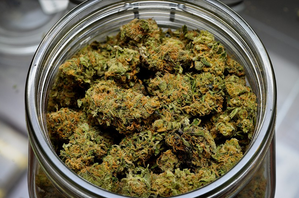
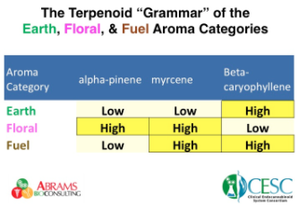
 RSS Feed
RSS Feed
